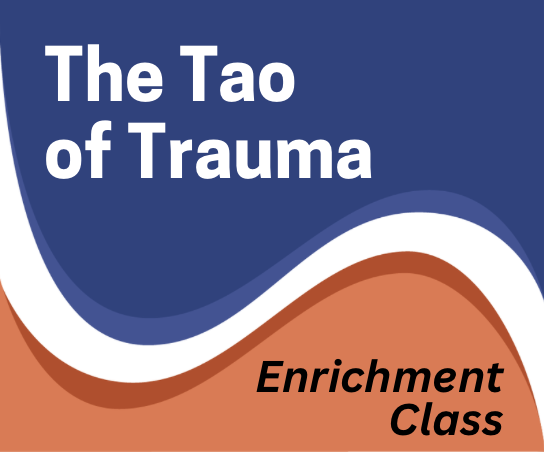
With Tracey Post and Alaine Duncan
Co Sponsored with The Princeton Center for MindBody Healing
OPEN TO ALL CURIOUS CLINICIANS – Social Workers, MFTs, Counselors, Occupational Therapists, Nurses, Holistic Nurses, Physical Therapists, Massage Therapists and BodyWorkers, Physicians, Psychologists, Naturopathic Physicians, Licensed Acupuncturists.
Alaine Duncan, M.Ac., L.Ac., Dipl.Ac, SEP
- Alaine Duncan is a Somatic Experiencing Practitioner and an acupuncturist who integrates the neurobiology of traumatic stress with the wisdom of Chinese medicine. She holds a particular fascination for how restoring balance and regulation in trauma survivors serves both individual healing and social transformation. Her book, The Tao of Trauma: A Practitioner’s Guide for Integrating Five Element Theory and Trauma Treatment, is the foundation of East-meets-West workshops she offers for acupuncturists, mental health and medical providers. More: https://integrativehealingworks.net/
Tracey Post, LCSW, EMDR, SEP
- Over 20 years of experience in trauma, post-traumatic growth, sexual health, and sexual identity. Expertise in Somatic Experiencing, multi-sensory trauma treatment, EMDR, women’s sexuality, gender identity, diverse sexual expression, and sexual orientation. Tracey is a nationally recognized speaker and consultant on topics including trauma, multi-sensory mindfulness and post-traumatic growth.
Monday, July 21, 2025
9:30 a.m. – 3:30 p.m. ET
$110
Format: Live Online through Rutgers University School of Social Work
REGISTER via RUTGERS here: https://ssw-ce.rutgers.edu/index.php?m=catalog&cid=329
Friday, July 25, 2025
10:00 a.m. – 4:30 p.m. ET
$140
Format: Live Online with Zoom
What is trauma and what defines trauma healing? Historically, trauma was defined as an event or series of events that happened in the past and trauma healing was defined as the understanding of that event.
What is now known: trauma, while often perceived as an event or series of events, is more the residue of those events remaining in the body, mind, and spirit. Symptoms of traumatic stress arise from incomplete or thwarted attempts at self-protection remaining in our tissues long after the event or series of events is over. These experiences often occur before we are physiologically developed to successfully navigate them — sometimes prior to birth and often prior to our capacity for cognitive awareness. They are what happens within, as the body tries, but is unsuccessful, at navigating real or perceived harm.
So, how can cognitive treatment resolve trauma? Short answer: it can’t. Thankfully our bodies are designed to go into both hyper-arousal and collapse to help us get through danger and life threat — and are also hard-wired to recover from these experiences — even the ones that occur before we have language or cognitive awareness. Clinicians can help bring regulation and balance to trauma survivors by engaging the body’s essential wisdom.
Here lies the power of bottom-up therapies. Healing that begins with the body. Body based healing invites the integration of new healthy coping skills to replace habituated responses of either or both hyper-arousal and collapse.
Participants will:
- Develop a multi-faceted definition of trauma
- Explore bottom-up approaches to healing trauma, including PolyVagal Theory, the neurobiology of the Self Protective Response, and the Tao of Trauma.
- Expand capacity to recognize your somatic cues of safety, arousal and collapse
- Recognize signs of somatic dysregulation and how to implement healing attunement
- Practice techniques designed to build capacity for self and co-regulation
- Cultivate a cultural context of healing
Course Outline:
| 10:00 – 10:15 AM | Introduction, Course Overview. How dysregulation and traumatic stress interrupts innate healing. |
| 10:15 – 11:00 AM | Exercise in experiencing an embodied sense of interception and elements of the trauma response cycle. Integrate a definition of interoception with the trauma response spectrum. |
| 11:00 AM – 12:00 PM | Develop a working definition of trauma based on current evidenced-based research incl. review of DSM-V definition. Review 5 steps of the Self Protective Response viewed side-by-side from the perspective of neurophysiology. Review the window of resilience versus the “faux” window of resilience. Quantify somatic cues of safety, arousal and collapse. |
| 12:00 – 12:15 PM | Break |
| 12:15 – 1:00 PM | Review of the ACES study. Review documentary clip, “Resilience Movie: The Biology of Stress and The Science of Hope” Identify the impact of ACES on the development of complex trauma as well as the potential impact on adult morbidity and mortality. |
| 1:00 – 2:00 PM | Lunch |
| 2:00 – 2:30 PM | Bring awareness to our ANS activation. Cultivate personal resource states. Discuss the importance of our own parasympathetic calming to our work with trauma survivors as a critical tool. |
| 2:30 – 3:15 PM | Review of Poly-Vagal Theory and the critical role of the ANS in mitigating traumatic stress. Review Poly Vagal Ladder Activity. Examine and integrate how bottom up processing strengthens the Ventral Vagus to expand social intelligence, whole body regulation and healing. |
| 3:15 – 3:30 PM | Break |
| 3:30 – 4:15 PM | Review Principles of Tao of Trauma as one method for resolving trauma spectrum responses. Integration of Tao of Trauma “bottom up” principles for healing Trauma. |
| 4:15 – 4:30 PM | Debrief learnings and objectives, final workshop questions, evaluation |
Course Completion Requirements:
- Live attendance of entire course in person
- No posttest
- Course evaluation required for credit. Certificate emailed after course completion within 7 days of receipt of evaluation
5 CEUs: NCCAOM; ASWB
Foundations of Trauma Healing – Cultivating Healing Through The Body’s Wisdom, 6120, is approved by the Association of Social Work Boards (ASWB) Approved Continuing Education (ACE) program to be offered by The Princeton Center for MindBody Healing as an individual course. Regulatory boards are the final authority on courses accepted for continuing education credit. ACE course approval period: 2/14/25 – 2/14/27. Social workers completing this course receive 4 clinical and 1 social and cultural competence continuing education credits.
Cancellations 30 days prior to class will receive full refund, less $50 administrative fee.


